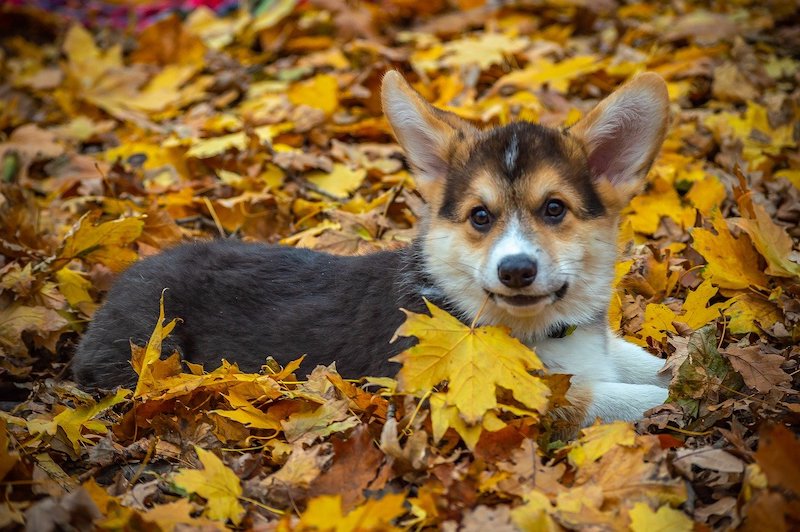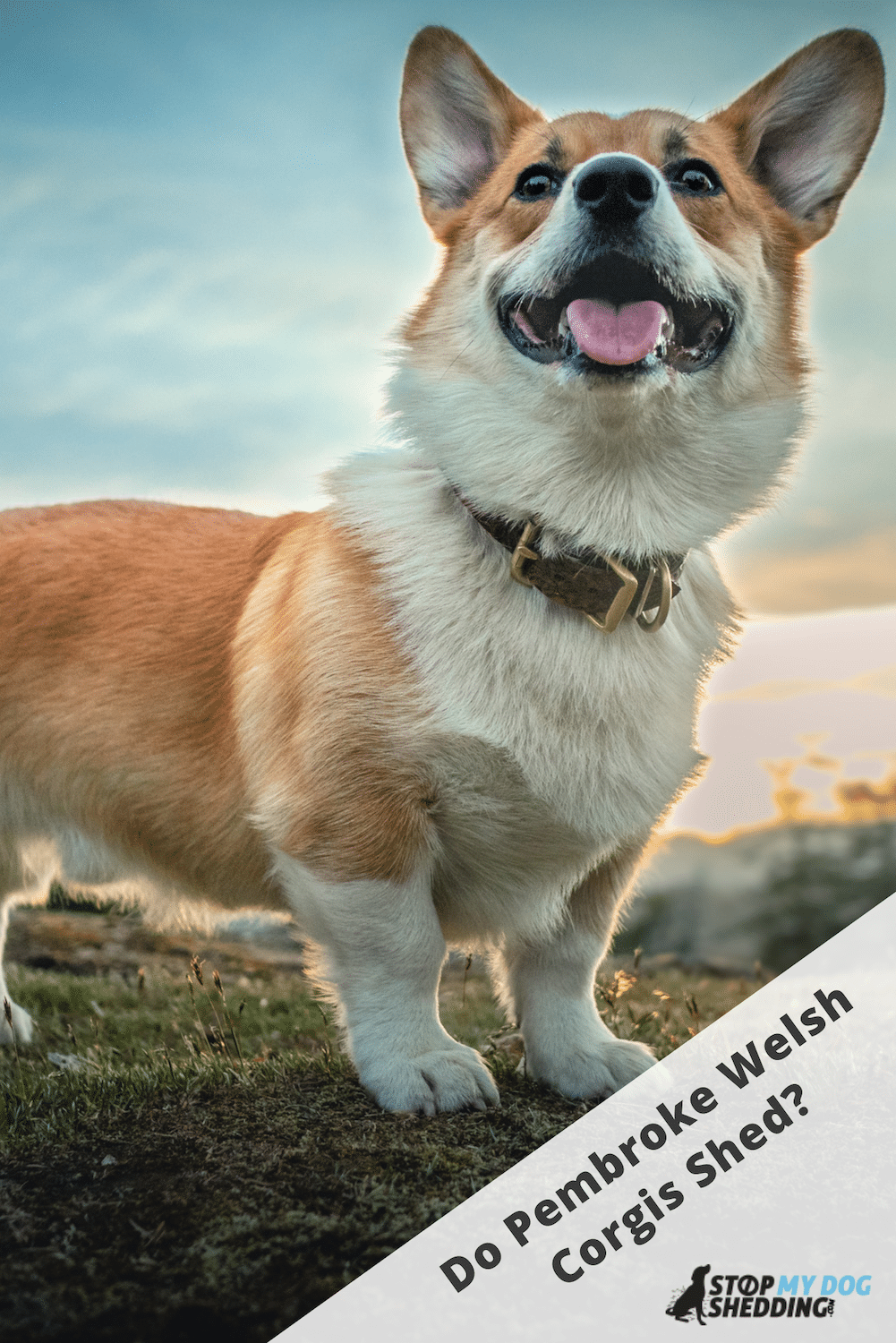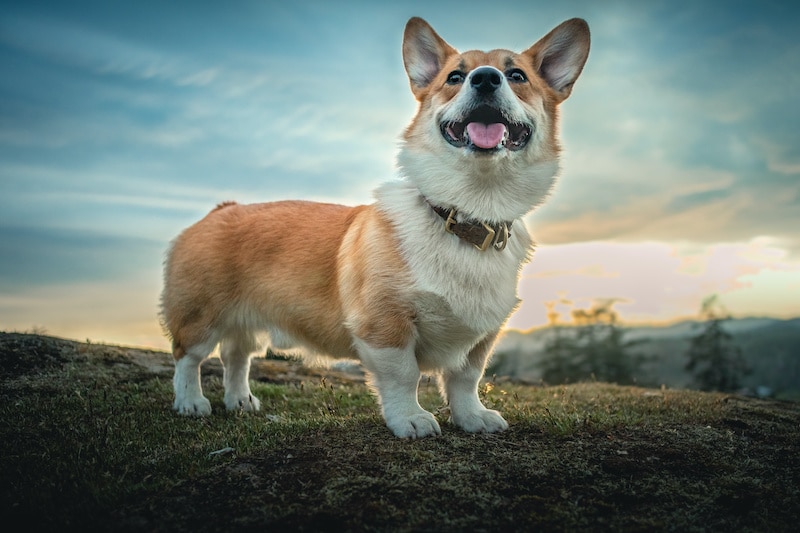Pembrokes originate from a county called Pembrokeshire in Wales where, hundreds of years ago, they were bred to herd cattle and sheep. They’ve gone on to become the prized companions of British royalty, as well as popular family dogs the world over.
How much do they shed? Pembroke Welsh Corgis are a heavy shedding breed. They have a thick, medium length double coat that is fairly easy to maintain, but as with most double coated breeds, they do shed seasonally during spring and fall. However, brushing daily can reduce shedding and keep your home fur free.
Let’s take a closer look at how much Pembrokes shed, some of the best ways you can get this under control and what makes this breed so unique.
Recommended: Go here to see our top-rated dog hair blow dryers
Pembroke Welsh Corgi Shedding
There’s no getting around it, Pembroke Welsh Corgis shed – a lot.
They shed about the same as similar breeds like the Swedish Vallhund and their close relative, the Cardigan Welsh Corgi.
Either way, shedding is normal, almost all dogs do it. This is a natural process that occurs when the old fur stops growing, and the new fur takes its place.
It’s just that this “hair growth cycle” occurs more rapidly in some dogs more than others. It has nothing to do with the size of the dog or how long their coat is, it has to do with the breed.
And as a breed, Pembrokes shed a moderate to high amount year round, and because they’re double coated, they shed heavily during spring and fall.
A double coated breed is a dog with an outer coat and an undercoat. And the reason breeds with a double coat (typically) shed seasonally is because their coat is preparing for the change in weather.
For example, they shed their winter coat in spring and shed their summer coat in the fall (autumn) or early summer. And during these times you’re going to notice a lot more fur falling out than normal.
What Are Pembrokes Like to Groom?
Thankfully, Pembrokes are quite easy to groom. Overall they are a low maintenance breed, all they require is a quick brush once or twice per week to maintain their coat.
With that being said, even though they are a fairly no fuss dog, you will want to brush daily to keep your home fur free. Especially during shedding season. And because they have such a thick, waterproof double coat, removing their dead fur takes more time than a single coated breed.
What’s the best brush to use?
Well, the Pembrokes coat is made up of medium length, course outer fur (that comes in red, fawn, sable, and black and tan) and a soft undercoat that protects them from the elements.
So a slicker brush or pin brush is best for the Corgi. This will help you remove any mats they may have, as well as dead fur from their coat. Follow up with an undercoat rake or deshedding tool, like the Furminator for example, as these work well to remove the loose fur from the undercoat.
You can compare the different types of dog brushes here to learn more.
The whole process shouldn’t take you any longer than 10 minutes for a regular session, and maybe a little longer once per week, to give them a more thorough going over.
Can you shave them? No, shaving your Pembroke Corgi is not a good idea. This may save you some time and effort, but they need their coat, it is there for a reason.
Not only does it keep them warm in winter, but it also helps them stay cooler in summer and protects them from things like sunburn. So shaving them is not a good idea.
Aside from brushing, other things you should consider when it comes to grooming are occasional bathing, cleaning their teeth and trimming their nails as needed.
Recommended: Go here to see our top-rated dog hair blow dryers
Can You Stop Pembroke Welsh Corgis from Shedding?
You cannot stop a Pembroke from shedding, nor any dog for that matter. Shedding is a natural process that almost every dog does to some extent.
However, you can reduce the shedding significantly.
How? The best way to reduce shedding in a Pembroke Welsh Corgi is with brushing. This is a simple, safe and effective method of removing the dead fur from their coat, before it ends up on your furniture. It also doesn’t take very much with a Pembroke either.
Other than removing the shed hairs from the source, brushing is also good for their coat as it helps to spread the oils of their coat. Which in turn promotes a healthy, moisture rich skin and coat.
Bathing is another good method of reducing shedding, especially during shedding season. A good bath with a quality dog shampoo can help to loosen the dead fur prior to brushing.
It’s important to make sure you’ve allowed them to dry before brushing though, and you don’t want to over bathe them, as this can dry out the skin. But a good bath and a thorough brushing session can make the world of difference.
Other methods of reducing shedding involve things like ensuring you’re feeding your Pembroke a quality dog food, and making sure there’s not something causing them to shed more than normal. Like an irritation or allergy to fleas, stress, or some other underlying cause.
It’s important to understand that Pembroke Welsh Corgis shed lots, especially twice per year, so chances are they are fine. But if you’re concerned they may be shedding more than what is considered normal for this breed, it may be worth contacting your local vet.
What Makes Pembroke Corgis Unique?
Pembrokes are one of the smallest herding dogs in the world. They are closely related to the Cardigan Welsh Corgi and some say the Swedish Vallhund given how similar they are in appearance.
Pembroke Corgis were bred to herd cattle and sheep, but are best known for being affectionate, intelligent dogs that loves human companionship. They’re also very easy to train and love to please their owners, which makes them fantastic, highly obedient family dogs.

They make excellent watchdogs too.
This is because they are a very alert and intelligent breed that only bark when they feel it is necessary. So they’ll keep watch over you and your family, without driving the neighbors mad.
With that being said, it is important to socialize them early on to avoid issues with other dogs and cats, and to ensure they are well adapted to being around children.
And they’re probably not the best choice if you can’t stand cleaning up loose fur, because these guys shed a lot. They’re fairly easy to groom though, so a simple brushing routine can allow you to enjoy the company of this amazing dog, without spending your days behind a vacuum.
Do All Corgis Shed Lots?
Corgis shed lots, it’s in their DNA, and this is true for the Pembrokes cousin, the Cardigan Welsh Corgi. So if you’re looking for a low shedding Corgi, you’ll need to find a mix.
For example, the Corgipoo is a low shedding breed that is a mix of the Welsh Corgi (heavy shedder) and Poodle (low shedder). So this is the ideal breed alternative if shedding is your concern.
And the general consensus is that, unlike pure bred Welsh Corgis, the Corgipoo is a hypoallergenic breed. Which means they are less likely than the average dog to upset those who suffer from pet allergies.
No dog is ever 100% hypoallergenic though, not even hairless breeds. Because the source of what makes you sneeze comes from the dander (dead skin) of the dog, not the fur.
However, the more a dog sheds, the more these allergens will find their way around your home. So, generally speaking, the less a dog sheds the more non-allergenic they are.
Aside from the Corgipoo, there are some other great (non-related) breeds of small dog that don’t shed. Such as the Italian Greyhound, Shih Tzu, and Basenji for example. So you have some options to consider here if you want a lower shedding alternative.













Please note: By submitting a comment using the above comment form, you confirm that you agree with the storage and handling of your data by this site as detailed in our Privacy Policy.